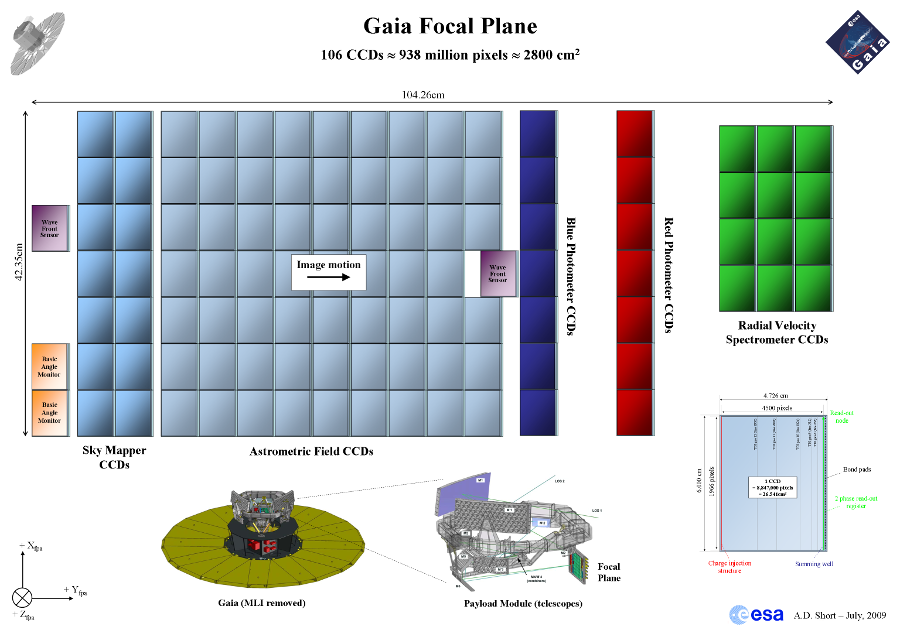The GAIA spacecraft, instruments and focal plane
Inside the satellite, Gaia's instruments are mounted on a hexagonal optical bench. The payload features two telescopes, with a FOV of 0.45 deg2 each, sharing a common focal plane.
The two viewing directions are separated by a highly stable basic angle of 106.5°. The Gaia focal plane will be the largest ever developed, with 106 CCDs, a total of almost 1 Gigapixels and physical dimensions of about 0.5 m x 1 m. (see Figure 3). A wave-front sensor (WFS) and two basic-angle monitors (BAM) are used to measure the optical quality of each telescope and to monitor fluctuations in the basic angle, respectively. As shown in figure 3, the objects enter the focal plane from the left and cross one CCD in 4 seconds. The first two columns, the Sky Mappers, perform the on-board detection of point-like sources, each of the two columns being able to see only one of the two lines of sight. After the objects are identified and selected, small windows are assigned which follow them in the Astrometric Field CCDs (62 detectors), where white light images are obtained in order to measure the angular position of stars. Immediately following the Astrometric Field, two additional columns of CCDs (14 detectors) gather light from two slitless prism spectrographs, the Blue Spectro-Photometer (BP) and the Red one (RP), which produce dispersed images in the 330-1050 nm wavelength range. Finally, objects transit on the Radial Velocity Spectrometer (RVS) CCDs (12 detectors) to produce higher resolution spectra around the Calcium Triplet region (847-874 nm).
Fig.3: Schematic of the Gaia focal plane (Copyright: ESA - Alexander Short)

